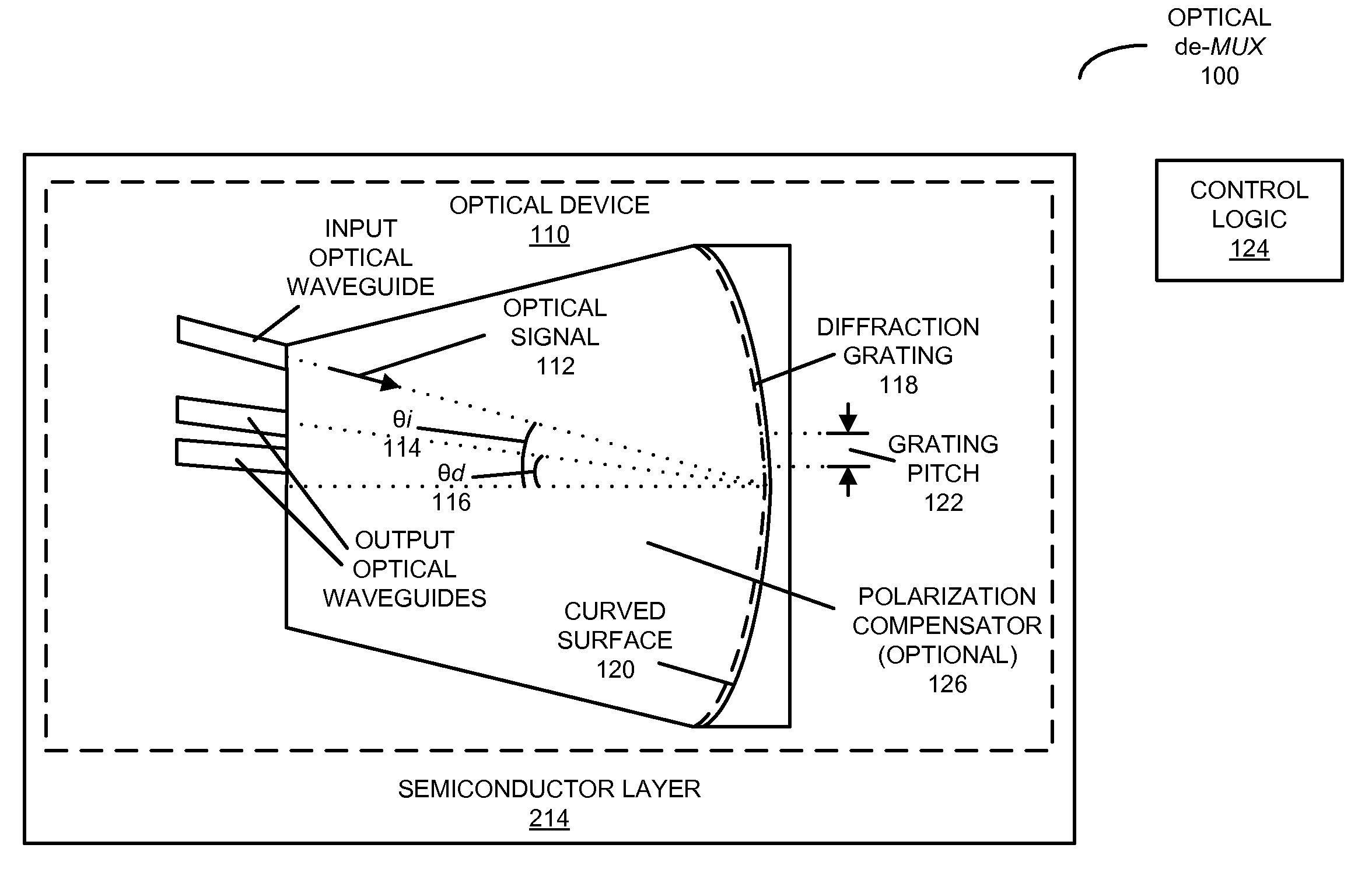Echelle grating with cyclic free-spectral range
a cyclic free-spectral range, optical device technology, applied in multiplex communication, optical elements, instruments, etc., can solve the problems of optical crosstalk and on-chip insertion loss, the focal length of the rowland circle on which the output optical waveguides are arranged (and hence the size of the device) increases dramatically, and the tuning energy of the optical device is reduced. , the effect of eliminating spectral gaps
- Summary
- Abstract
- Description
- Claims
- Application Information
AI Technical Summary
Benefits of technology
Problems solved by technology
Method used
Image
Examples
Embodiment Construction
[0028]Embodiments of an optical de-multiplexer (de-MUX), a system that includes the optical de-MUX, and a method for de-multiplexing an optical signal are described. This optical de-MUX includes an optical device that images and diffracts the optical signal using a reflective geometry, where a free spectral range (FSR) of the optical device associated with a given diffraction order abuts FSRs associated with adjacent diffraction orders (which is sometimes referred to as a ‘cyclic FSR’). Moreover, the channel spacings within diffraction orders and between adjacent diffraction orders are equal to the predefined channel spacing associated with the optical signal (e.g., the FSR equals the number of channels times the channel spacing). As a consequence, the optical device has a comb-filter output spectrum, which reduces a tuning energy of the optical device by eliminating spectral gaps between diffraction orders of the optical device.
[0029]By providing a cyclic FSR, the optical de-MUX ca...
PUM
 Login to View More
Login to View More Abstract
Description
Claims
Application Information
 Login to View More
Login to View More - R&D
- Intellectual Property
- Life Sciences
- Materials
- Tech Scout
- Unparalleled Data Quality
- Higher Quality Content
- 60% Fewer Hallucinations
Browse by: Latest US Patents, China's latest patents, Technical Efficacy Thesaurus, Application Domain, Technology Topic, Popular Technical Reports.
© 2025 PatSnap. All rights reserved.Legal|Privacy policy|Modern Slavery Act Transparency Statement|Sitemap|About US| Contact US: help@patsnap.com



